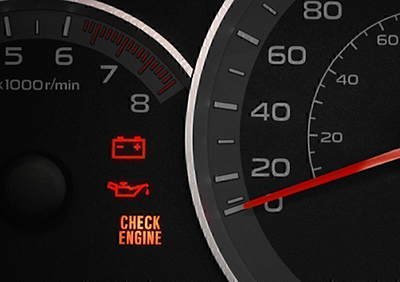Your Car Needs Some TLC During the Coronavirus Outbreak
Last updated April 23, 2020
 Driving patterns have changed dramatically because of the coronavirus outbreak. While you’re staying safe at home, your car sits for long stretches of time, and that can cause some mechanical problems.
Driving patterns have changed dramatically because of the coronavirus outbreak. While you’re staying safe at home, your car sits for long stretches of time, and that can cause some mechanical problems.
“A car is made to move; it’s a machine that’s only happy when it’s moving,” said Jeff Bartlett, deputy editor at Consumer Reports Autos.
In the short term, the most likely problem caused by not driving the car will be a dead battery. Today’s cars have always-on electronics that can drain the battery of enough power that it won’t be able to start the engine.
“Newer vehicles can have their battery drained in as little as a week,” said Dave Armstrong, an ASE Certified Master Automotive Technician with AAA roadside assistance.
The solution: Take a 15- to 20-minute drive once a week. This will give the alternator time to recharge the battery. It’s a good way to get out of the house and practice safe distancing.
“Driving also allows all of the fluids to warm up and all of the moving parts to literally move, so they're not seizing in place,” Bartlett told Checkbook. “It helps smooth the tires, so you're not getting those flat spots and it allows you to use the brakes so that they are operating and not collecting rust.”
This advice also applies to hybrids. Plug-in electrics will see some incremental loss in energy over time and their batteries may need to be topped off if parked for an extended period, Bartlett said. This is a non-issue if the vehicle is left plugged in at home or plugged in once a week.
If a car stays stationary for a month or so, other problems can develop, including flat spots on tires, rust on brake rotors, damage to seals, and water in the fuel tank.
Note: Even when your car is parked, your tires will lose air pressure over time—about one PSI a month, Consumer Reports estimates. So, it’s a good idea to check the tire pressure every month or so.
Gasoline Can Go Bad Over Time
For those who are driving less, the intervals between fill-ups are getting much longer. That old gasoline in the fuel tank is getting stale and degrading. You can also get a build-up of water vapor in the fuel tank.
“That water vapor can cause some corrosion problems in the tank and engine problems when you start the car,” said Will Kaufman, an automotive writer at Edmunds. “So keep your tank topped off, even if you don’t plan to make any long trips. If you have a completely full tank, there’s less opportunity for fuel separation and condensation, and it will keep the seals submerged and lubricated.”
According to Consumer Reports, gasoline can go bad in as little as three months. A fuel stabilizer, such as Sea Foam or Sta-Bil, can make the old gas in your tank last longer. These are the same products many people use with the lawn equipment and snowblowers between seasons.
What About Service Intervals?
For those who are not doing much driving, it makes sense to stretch out those service intervals, Consumer Reports says.
“You can stretch the oil changes by a few hundred miles and it will have no impact on a well-maintained vehicle,” said CR’s Bartlett. “We found that a lot of these quick lube shops will change the oil while you stay in the car.”
For More Info:
Click here for Checkbook’s ratings of auto repair shops for quality and price.
Consumer Reports: Car Care and Maintenance During the Coronavirus Pandemic
Edmunds: Car Maintenance and Repair During COVID-19
Contributing editor Herb Weisbaum (“The ConsumerMan”) is an Emmy award-winning broadcaster and one of America's top consumer experts. He is also the consumer reporter for KOMO radio in Seattle. You can also find him on Facebook, Twitter, and at ConsumerMan.com.


